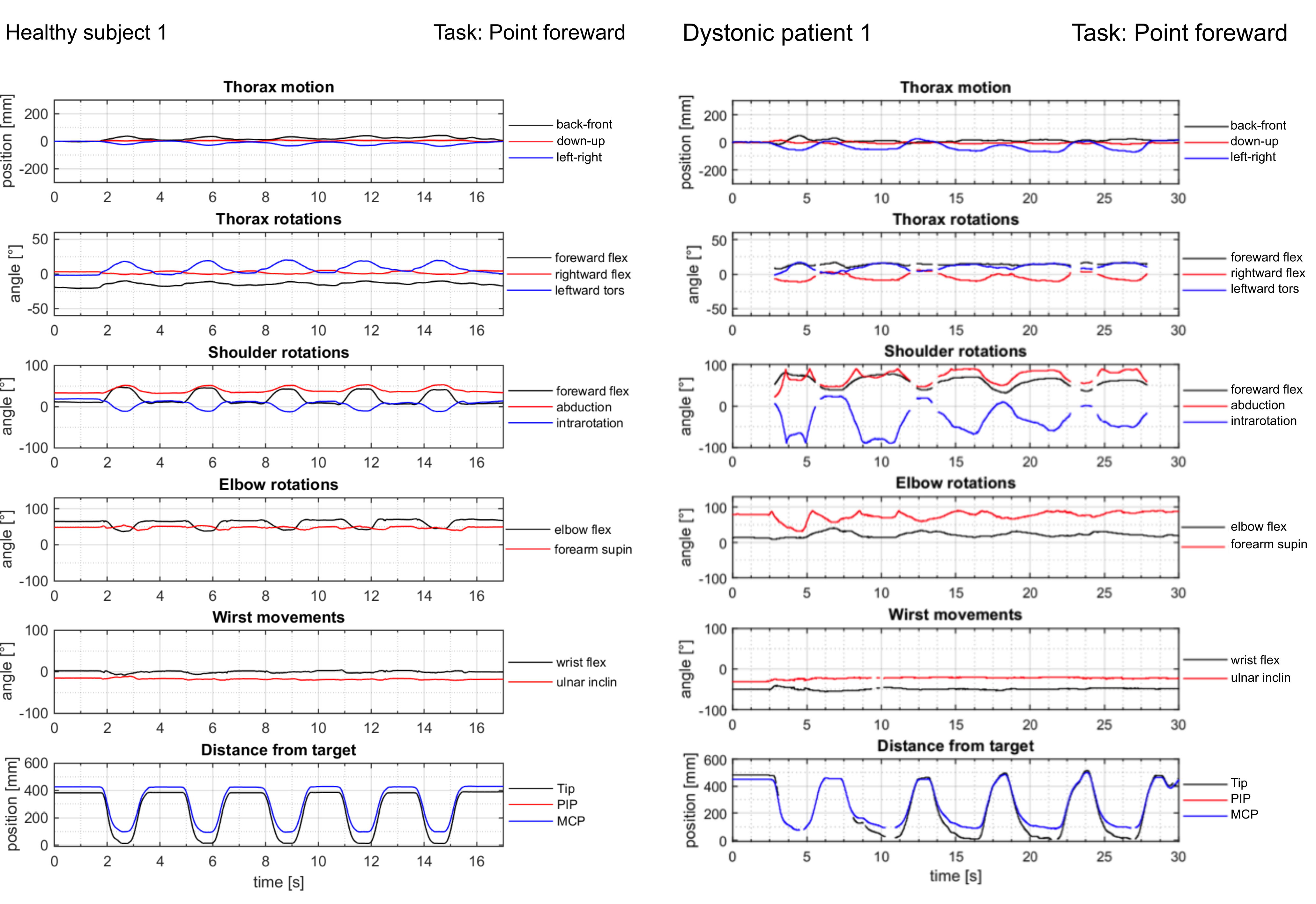Session Information
Date: Tuesday, June 6, 2017
Session Title: Therapy in Movement Disorders
Session Time: 1:45pm-3:15pm
Location: Exhibit Hall C
Objective: The study proposes a specialised protocol to collect and analyse kinematic data from paediatric patients affected by Movement Disorders (MD). The aim is to provide a dedicated tool to quantify the patient’s clinical state and its evolutions.
Background: Upper-limb movement patterns in children with MD are very complex and difficult to interpret visually. In the absence of a quantitative description of motion through tracings and indices, motor function can only be tested using clinical scales that are likely affected by subjective factors. Patient evaluation is also difficult because the overall improvements often arise as the sum of mild segment-specific variations, which the clinical scales may not be able to score. Very few studies have addressed the problem of upper-limb kinematic analysis in the young affected by MD, and until now, there is no standard procedure. In addition, normality data for upper-limb tasks in children are scant.
Methods: Optoelectronic photogrammetry was selected as the measurement technique. A 30-marker set-up was developed to acquire the positions of fiduciary body points in time and inform a 3D model of the trunk, shoulder, upper-arm, elbow, forearm, wrist and index finger. The analysis comprises an efficient method to limit data loss in case the view of some markers by the cameras is blocked out during involuntary movements.
Six healthy boys (12.6±4.9 years old) took part in this study, as well as five children (12.2±5.6 years old) with complex MD pictures comprising secondary dystonia and dyskinesia to check the protocol adaptability in real cases. Subjects were asked to carry out two motor tasks extracted from the Melbourne Assessment: reach forward to a target and hand-to-mouth.
Results: The displacements and orientations of each body segment have been determined in heathy and patients. Report sheets with tracings and values of relevant linear and angular quantities, and characteristic movement phase durations have been prepared. In figure 1 are shown some normality and pathological curves.
[Figure 1]
Conclusions: The method here presented is suitable to record reliably the upper-limb kinematics in relevant standardised tasks. The result of movement analysis produces a set of tracings and indices with direct clinical interpretation, which can be of help in determining the performance of paediatric MD patients quantitatively and characterising changes.
To cite this abstract in AMA style:
L. Garavaglia, E. Pagliano, A. Lo Mauro, G. Baranello, A. Aliverti, S. Pittaccio. Protocol for upper-limb kinematic analysis in paediatric movement disorders and relative normality data [abstract]. Mov Disord. 2017; 32 (suppl 2). https://www.mdsabstracts.org/abstract/protocol-for-upper-limb-kinematic-analysis-in-paediatric-movement-disorders-and-relative-normality-data/. Accessed December 19, 2025.« Back to 2017 International Congress
MDS Abstracts - https://www.mdsabstracts.org/abstract/protocol-for-upper-limb-kinematic-analysis-in-paediatric-movement-disorders-and-relative-normality-data/

